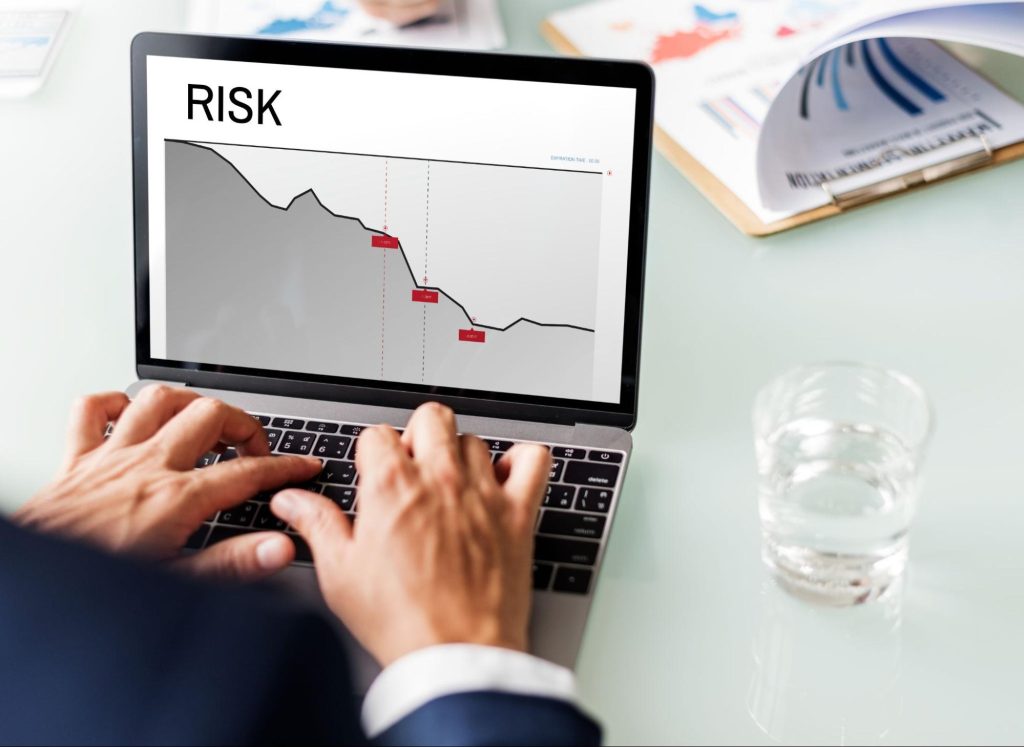
The complexity of modern business risks demands more than traditional approaches to safeguard operations and protect assets. Traditional risk management methods alone no longer suffice to handle the complex threats businesses face today. Technology is a crucial foundation for identifying, assessing, and addressing risks in various industries. From financial institutions detecting fraud in real time to healthcare providers safeguarding patient data, technology is central to advanced risk mitigation. As digital transformation continues, organizations must integrate tech-driven solutions to stay agile and resilient against evolving challenges.
Understanding Risk Mitigation in Modern Context
Risk mitigation involves strategies to identify, assess, and reduce the impact of potential risks before they escalate. It’s a proactive approach to safeguard an organization’s resources, reputation, and operations from unforeseen events. Today, risk mitigation addresses financial loss and considers reputational, operational, and strategic risks that can disrupt normal business activities.
Key Areas Impacted by Risk Mitigation
Risk mitigation is crucial in sectors like finance, cybersecurity, and healthcare, where the stakes are high. In finance, organizations face market volatility, fraud, and regulatory compliance risks, necessitating sophisticated risk assessment tools. Cybersecurity requires constant vigilance due to cyber threats’ increasing volume and complexity. Healthcare relies on effective risk mitigation to ensure patient safety, manage sensitive data, and comply with regulatory requirements.
The Benefits of Technology in Risk Mitigation
Technology has reshaped the risk mitigation landscape, bringing new capabilities and efficiencies. With technology, organizations gain tools to predict and respond to risks faster and more accurately. These advances help companies safeguard their operations and improve decision-making in uncertain environments.
Improved Precision and Accuracy
Technology allows for greater precision and accuracy in risk assessments. Data-driven tools can analyze vast amounts of information with minimal human error. Organizations can make more informed decisions and prioritize resources effectively by reducing inaccuracies.
Faster Response Times
Modern technology enhances response times, allowing organizations to act swiftly in the face of risks. Automation and real-time monitoring can detect irregularities instantly, enabling rapid containment or corrective measures. Quick response reduces damage and keeps business
operations running smoothly.
Proactive Risk Detection
Technological advancements have enabled identifying risks before they become significant issues. Predictive analytics and machine learning can flag anomalies, anticipating risks based on patterns and historical data. This proactive approach helps organizations stay one step ahead, preventing costly disruptions.
Key Technologies Enhancing Risk Mitigation
Several technologies are transforming risk mitigation by enabling faster, more reliable responses. Organizations that adopt these technologies can enhance their ability to anticipate, understand, and mitigate risks. Each of these tools provides unique strengths in addressing modern threats.
Artificial Intelligence and Machine Learning
AI and machine learning have transformed risk mitigation by automating complex analyses and identifying trends. These technologies enable the detection of unusual patterns that may indicate risks, like fraud or cyber threats. Machine learning algorithms can evolve, continuously improving their accuracy.
Big Data and Analytics
Big data enables organizations to analyze massive data sets for insights into potential risks. Advanced analytics allow pattern recognition across various sources, helping predict future threats. By understanding these patterns, companies can implement measures to prevent anticipated issues.
Blockchain Technology
Blockchain is increasingly popular for securing transactions and data, especially in finance. Its decentralized structure minimizes fraud risks and strengthens data integrity. In industries where transparency and traceability are critical, blockchain offers a powerful tool for risk mitigation.
Internet of Things (IoT)
The Internet of Things provides real-time data from connected devices, which helps monitor physical risks. In manufacturing, IoT sensors can track machine health, predicting failures before they happen. This technology allows organizations to avoid disruptions by addressing issues early on.
How Technology-Driven Strategies Are Applied Across Sectors
Technology-driven risk mitigation strategies differ across industries, tailoring to specific operational needs. Industries like finance, healthcare, and manufacturing employ unique approaches to manage their risks. These strategies demonstrate how technology adapts to support varied risk management goals.
Financial Services
In finance, technology helps identify fraud through data analytics and behavioral tracking. Machine learning models detect abnormal activities, alerting banks and clients in real time. Additionally, financial forecasting models aid in anticipating market risks, helping institutions manage investments wisely.
Healthcare
Technology in healthcare aids risk mitigation by ensuring patient safety and managing sensitive information. Electronic Health Records (EHRs) store patient data securely, reducing the risk of data breaches. Additionally, tech-based crisis management systems help hospitals respond efficiently to emergencies.
Manufacturing
In manufacturing, predictive maintenance reduces the risk of equipment failure. IoT sensors monitor machinery, allowing for repairs before issues escalate. Technology also improves supply chain visibility, helping manufacturers identify and address risks, such as delays or disruptions, early on.
Factors to Consider When Implementing Technology
Implementing technology for risk mitigation requires careful consideration of organizational needs and challenges. Factors like scalability, security, and costs can influence the success of tech-driven strategies. Organizations should weigh these factors to ensure effective and sustainable risk management.
Scalability
Organizations need scalable solutions that can grow with their risk management needs. Technology should accommodate increasing data volume and evolving requirements. Choosing scalable tools ensures consistent effectiveness as risks and operations expand.
Security and Privacy
Implementing new technology requires a focus on data security and privacy. Protecting sensitive information is crucial, especially in sectors like finance and healthcare. Strong cybersecurity measures reduce the likelihood of data breaches or unauthorized access.
Costs and ROI
Cost is an essential factor in adopting technology for risk mitigation. Organizations should weigh upfront costs against the long-term return on investment. Effective technology should reduce risks and provide tangible value by preventing costly disruptions.
Challenges in Using Technology for Risk Mitigation
Despite its advantages, technology in risk mitigation comes with unique challenges. These obstacles can impact the efficiency and reliability of tech-driven solutions. Organizations must address these challenges to optimize their risk management efforts.
Data Overload and Complexity
Handling vast amounts of data can overwhelm organizations, leading to “data paralysis.” Analyzing complex data requires specialized skills and resources. Organizations may struggle to use insights for risk mitigation without effective data management.
Integration With Existing Systems
Many organizations face challenges integrating new technology with legacy systems. Compatibility issues can lead to inefficiencies and increased costs. It’s essential to assess how well new solutions fit within existing infrastructures.
Evolving Threat Landscape
As technology advances, new risks continue to emerge, requiring ongoing adaptation. Cyber threats, in particular, evolve rapidly, demanding continuous vigilance. Staying updated with the latest tools and strategies is essential to protecting against future risks.
Step-By-Step Guide for Implementing Tech-Driven Risk Mitigation
Adopting technology for risk mitigation involves a systematic approach to ensure its effectiveness and long-term success. Below is a structured process that can guide businesses in adopting technology for comprehensive risk management. Each step provides insight into building a sustainable and efficient risk mitigation framework.
1: Assess Current Risk Landscape
Businesses must first understand their unique risk landscape. Conducting a risk assessment helps identify specific vulnerabilities, from cybersecurity threats to operational risks. This foundational step informs decisions on which technologies are most suitable for addressing these risks.
2: Select Appropriate Technologies
Choosing the right technology is crucial for effective risk management. Consider industry-specific needs, compatibility with existing systems, and the scalability of the technology. For example, finance businesses may prioritize AI for fraud detection, while manufacturers might focus on IoT for monitoring equipment.
3: Pilot the Technology
Implementing a pilot program enables organizations to test new technology on a small scale. This step helps identify integration issues, evaluate effectiveness, and allow for adjustments before a full rollout. Pilots also minimize disruption to regular operations while testing the technology’s viability.
4: Train Employees and Secure Buy-In
Employees play a significant role in the success of technology adoption. Thorough training ensures that staff understand how to use new systems effectively. Clear communication about the technology’s benefits fosters buy-in, reducing resistance and increasing user adoption.
5: Scale and Monitor Ongoing Performance
Once the pilot program shows promising results, businesses can scale the technology across departments or locations. Continuous monitoring is essential to evaluate its performance and address emerging risks. Regular assessments and updates ensure that the technology remains effective as risks evolve.
Compliance in Enhancing Risk Mitigation Strategies
Technology is vital in helping organizations meet compliance requirements across various industries. From data privacy regulations to industry-specific standards, aligning risk management technology with compliance needs can prevent costly penalties. These regulations are essential to maximizing technology’s effectiveness in risk mitigation.
Industry-Specific Compliance Requirements
Different industries face unique regulatory demands. Financial institutions must comply with anti-money laundering laws, while healthcare organizations prioritize patient data security under HIPAA. Adopting technology that aligns with these standards ensures compliance and reduces legal risks.
Automation for Compliance Monitoring
Technologies like AI can monitor compliance with regulations automatically, minimizing manual oversight. For instance, AI-powered tools can identify potential compliance breaches in real time, alerting the organization before issues escalate. This automation helps reduce human error and enhances efficiency in regulatory monitoring.
Building a Compliance-First Culture
Technology alone is not enough; fostering a culture of compliance throughout the organization is equally important. Providing ongoing training and encouraging staff to stay updated on regulatory changes can prevent compliance risks. Combining technology with a strong compliance culture produces a robust defense against regulatory challenges.
Drive Resilience Through Innovative Risk Mitigation
The path to resilient risk mitigation is no longer a question of if but how effectively technology can be integrated to protect what matters most. Technology offers tools and transformative insights that redefine how businesses navigate threats. Companies can turn potential disruptions into growth, security, and competitive advantage opportunities by adopting tech-driven strategies. Business consulting services provide invaluable expertise for companies ready to act to tailor these technologies precisely to your needs, ensuring seamless implementation and ongoing support. Start building a risk strategy that doesn’t just react but evolves with every challenge, leading your business into a secure, adaptable future.
Dive deeper into risk management strategies on our Comply Secured blog.


